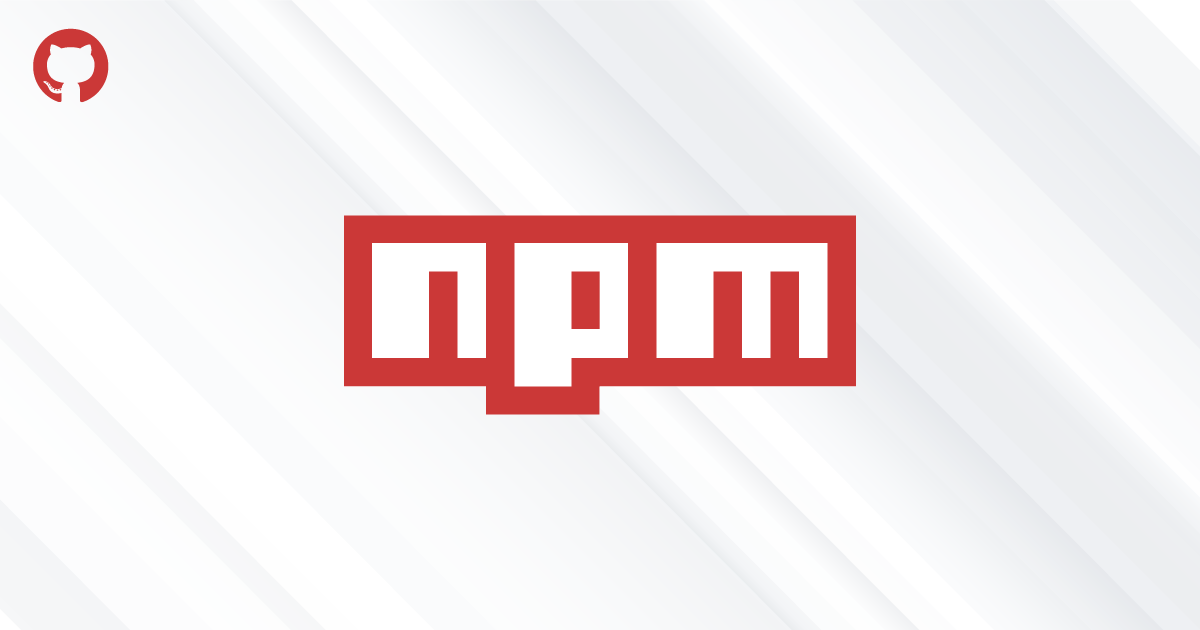npm Uninstall Unused Packages: A Quick Guide
Learn how to effortlessly remove unused Node.js packages using simple npm commands for a streamlined and efficient development process.
Learn how to effortlessly remove unused Node.js packages using simple npm commands for a streamlined and efficient development process.
This guide explains how to remove unused npm packages in your Node.js projects to keep your project clean and efficient. There are several ways to identify unused packages in your project. Once you've identified unused packages, you can remove them using npm commands. After removing packages, always test your application to ensure everything works correctly.
This guide explains how to remove unused npm packages in your Node.js projects, keeping your project clean and efficient.
1. Identifying Unused Packages
Before removing packages, it's crucial to know which ones are unused. While npm prune removes extraneous packages (not in package.json), it doesn't identify unused dependencies. Here are two popular tools:
depcheck: This tool analyzes your project and lists unused dependencies. Install it globally:
npm install -g depcheckThen, navigate to your project directory and run:
depchecknpm-check: This tool provides an interactive way to manage dependencies. Install it globally:
npm install -g npm-checkRun it in your project directory:
npm-checkYou'll see a list of dependencies with options to update, uninstall, or keep them.
2. Removing Unused Packages
npm uninstall: Use this command to remove specific packages. For example, to remove the package 'axios':
npm uninstall axiosnpm prune: This command removes "extraneous" packages, meaning those not listed as dependencies in your package.json file. These are often packages installed as a dependency of another package but are no longer needed after updates. Run:
npm prune3. Removing a Specific Unused Package (if known)
If you already know the name of the unused package, you can directly uninstall it:
npm uninstall <package_name>For example:
npm uninstall moment Important Notes:
This JavaScript code uses the 'depcheck' tool to identify and remove unused npm packages from a project. It first runs 'depcheck' to get a list of unused packages. Then, it checks if a specific package ('axios' in this example) is present in the list. If found, it uses 'npm uninstall' to remove the package. The code includes error handling and logging for each step.
// Example using 'depcheck' to find and remove an unused package
const { exec } = require('child_process');
// Function to run a command and log the output
function runCommand(command) {
exec(command, (error, stdout, stderr) => {
if (error) {
console.error(`Error: ${error.message}`);
return;
}
if (stderr) {
console.error(`Stderr: ${stderr}`);
return;
}
console.log(`Output: ${stdout}`);
});
}
// 1. Find unused packages with 'depcheck'
runCommand('depcheck', (error, stdout, stderr) => {
if (error) {
console.error(`Error running depcheck: ${error.message}`);
return;
}
// Assuming depcheck output lists unused packages one per line
const unusedPackages = stdout.trim().split('\n');
if (unusedPackages.length > 0) {
console.log('Unused packages found:', unusedPackages);
// 2. Remove an unused package (example: 'axios')
const packageToRemove = 'axios';
if (unusedPackages.includes(packageToRemove)) {
runCommand(`npm uninstall ${packageToRemove}`, (error, stdout, stderr) => {
if (error) {
console.error(`Error uninstalling ${packageToRemove}: ${error.message}`);
return;
}
console.log(`${packageToRemove} successfully uninstalled!`);
});
} else {
console.log(`${packageToRemove} not found in the list of unused packages.`);
}
} else {
console.log('No unused packages found.');
}
});Explanation:
exec: This function from Node.js's child_process module is used to execute shell commands.runCommand function: This function simplifies running commands and logging their output.runCommand('depcheck'): Executes the depcheck command.depcheck (listing unused packages) is processed and stored in the unusedPackages array.axios is in the unusedPackages array.npm uninstall axios to remove the package.To use this code:
.js file (e.g., remove_unused.js).depcheck installed globally (npm install -g depcheck).node remove_unused.js.Remember: This is a basic example. You can adapt it to remove multiple packages, use different tools like npm-check, or integrate it into your build process. Always test your application after removing packages.
npm install to update your package-lock.json file. This ensures that your project's dependencies are consistent.devDependencies in your package.json. These are typically used for development and testing but not in production. You can use npm prune --production to remove extraneous packages that are only listed as devDependencies.depcheck and npm-check, consider using npx to run them directly without a global installation:
npx depcheck
npx npm-checkThis guide summarizes how to remove unused npm packages from your Node.js projects.
| Step | Description | Command |
|---|---|---|
| 1. Identify Unused Packages | Use tools to find unused dependencies. | |
| depcheck: Analyzes project and lists unused dependencies. |
npm install -g depcheck depcheck
|
|
| npm-check: Provides an interactive way to manage dependencies. |
npm install -g npm-check npm-check
|
|
| 2. Remove Unused Packages | ||
| npm uninstall: Removes specific packages. | npm uninstall <package_name> |
|
npm prune: Removes extraneous packages not listed in package.json. |
npm prune |
|
| 3. Remove Specific Unused Package (if known) | Directly uninstall the package if you know its name. | npm uninstall <package_name> |
Important Notes:
Removing unused npm packages is essential for maintaining a clean and efficient Node.js project. By using tools like depcheck or npm-check, developers can easily identify and uninstall unnecessary dependencies. Regularly pruning extraneous packages with npm prune and updating the package-lock.json file ensures project consistency. Remember to thoroughly test the application after removing packages and consider using version control for easy rollback. By incorporating these practices, developers can keep their Node.js projects lightweight, maintainable, and optimized for performance.
 Some of the dependencies here are unused, how do I remove them ... | Posted by u/PrestigiousZombie531 - 36 votes and 28 comments
Some of the dependencies here are unused, how do I remove them ... | Posted by u/PrestigiousZombie531 - 36 votes and 28 comments How to NPM unistall unused packages in Node.js | by VithalReddy ... | Consider, you’re developing a shiny new node.js project and according to your need, design, and business logic, you’ve installed many NPM…
How to NPM unistall unused packages in Node.js | by VithalReddy ... | Consider, you’re developing a shiny new node.js project and according to your need, design, and business logic, you’ve installed many NPM… How to check unused npm packages? - DEV Community | There are several solutions available, depcheck and npm-check are the most common...
How to check unused npm packages? - DEV Community | There are several solutions available, depcheck and npm-check are the most common... How to Remove Packages Using the npm uninstall Command. | Jan 31, 2024 ... Removing npm Packages · The short answer · Removing global packages with the -g flag · Cleaning unused dependencies · Removing packages without ...
How to Remove Packages Using the npm uninstall Command. | Jan 31, 2024 ... Removing npm Packages · The short answer · Removing global packages with the -g flag · Cleaning unused dependencies · Removing packages without ... Remove unused npm modules from package.json - DEV Community | Depcheck is a tool for analyzing the dependencies in a project to see: how each dependency is used, w...
Remove unused npm modules from package.json - DEV Community | Depcheck is a tool for analyzing the dependencies in a project to see: how each dependency is used, w... npm-prune | npm Docs | Remove extraneous packages
npm-prune | npm Docs | Remove extraneous packages How to Remove Unused Dependencies in React | Jul 28, 2020 ... Uninstalling Packages Using npm uninstall. In general, you can uninstall any npm package or dependency by running the following command: npm ...
How to Remove Unused Dependencies in React | Jul 28, 2020 ... Uninstalling Packages Using npm uninstall. In general, you can uninstall any npm package or dependency by running the following command: npm ...